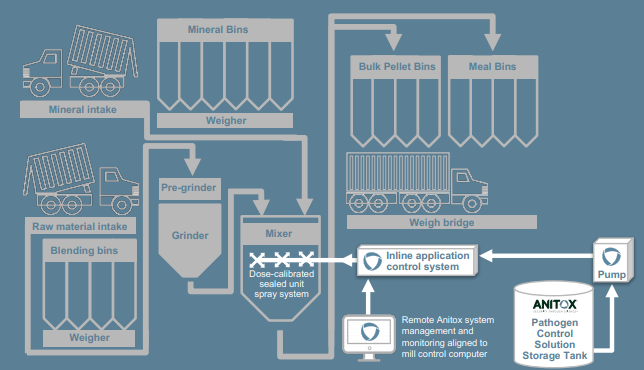Formaldehyde is one of the most well-studied compounds, with a well characterized risk profile. The colorless, strong-smelling chemical occurs naturally in humans, animals and plants. With effective management of prolonged exposure, we can utilize formaldehyde in many industries including feed and food production. Termin-8 remains the most effective pathogen control tool capable of protecting feed from mill to feeder.
In feed production, liquid formaldehyde-based solutions are applied in contained application systems with emphasis on worker safety. Did you know? Formaldehyde does not accumulate in the environment. It is broken down by sunlight and bacteria in soil and water. It also does not accumulate in humans and animals because it is metabolized quickly. (ATSDR; Lu et al, 2010)
Formaldehyde treatment takes place in contained systems. Workers in the vicinity are equipped and trained to use monitoring equipment and spill kits in the event of an emergency.
Formaldehyde treatment helps ensure that feed is free from Salmonella contamination at the point of manufacture and, thanks to its residual properties, at the point of consumption.
Clean feed reduces the incidence of Salmonella in birds and, as a result, improves consumer safety.

